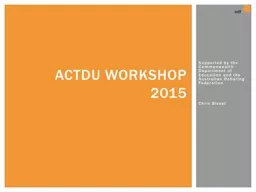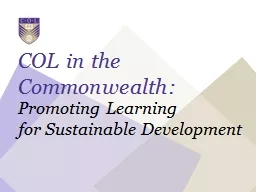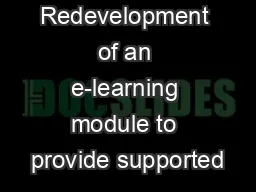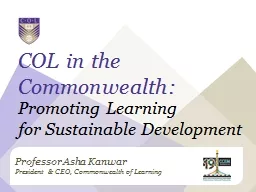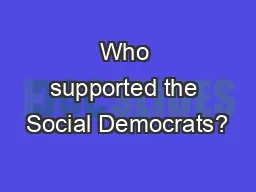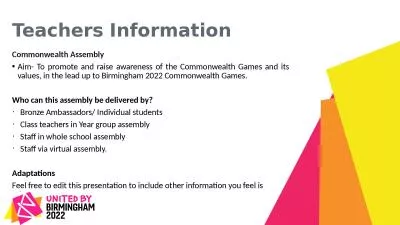PPT-Supported by the Commonwealth Department of Education and t
Author : alexa-scheidler | Published Date : 2017-04-07
Chris Bisset ACTDU Workshop 2015 Session 1 915am1000am 45mins Rethinking debating Constructing Arguments Trivia amp Morning Tea Session 2 1100am1145am 45mins Preparing
Presentation Embed Code
Download Presentation
Download Presentation The PPT/PDF document "Supported by the Commonwealth Department..." is the property of its rightful owner. Permission is granted to download and print the materials on this website for personal, non-commercial use only, and to display it on your personal computer provided you do not modify the materials and that you retain all copyright notices contained in the materials. By downloading content from our website, you accept the terms of this agreement.
Supported by the Commonwealth Department of Education and t: Transcript
Download Rules Of Document
"Supported by the Commonwealth Department of Education and t"The content belongs to its owner. You may download and print it for personal use, without modification, and keep all copyright notices. By downloading, you agree to these terms.
Related Documents

